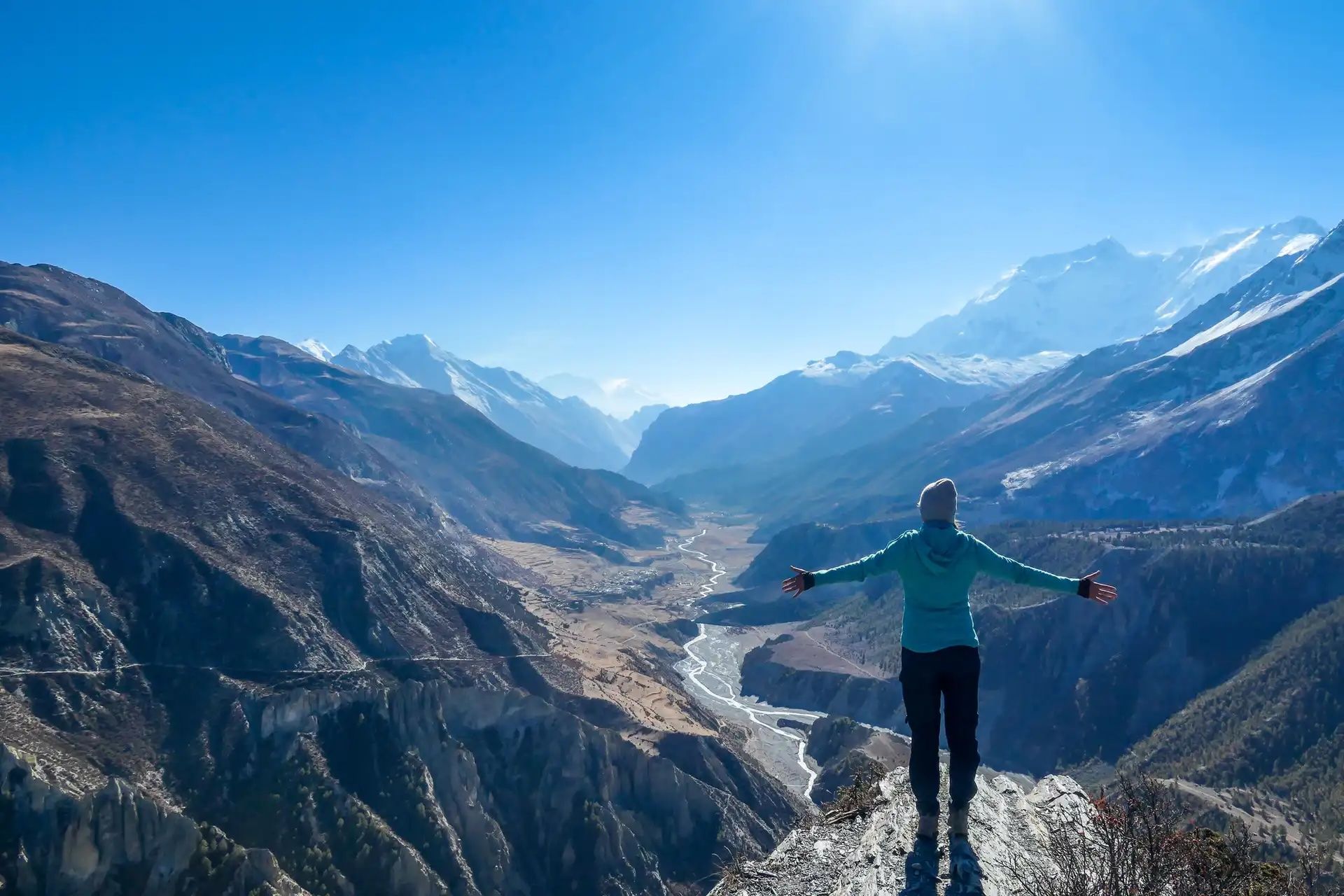The Annapurna Circuit is one of the world’s most legendary trekking routes, a sweeping journey through Nepal’s diverse landscapes. Beginning in the remote Himalayan village of Tal, you’ll pass through lush subtropical valleys. The trail ascends past terraced fields and rhododendron forests into high-altitude terrain; snow-capped peaks including mighty Annapurna (8,091m/26,545ft) dominate the horizon.
Trekkers cross windswept plateaus and pass remote villages infused with Tibetan Buddhist traditions, as the trail climbs ever higher. It culminates in the crossing of the formidable Thorong La pass at 5,416m (17,769ft). As you descend to the end point in the village of Jomsom, you’ll pass through Kali Gandaki, the deepest gorge in the world – three times deeper than the Grand Canyon.

Hiking the Annapurna Circuit can take between 14 and 22 days, depending on whether you take shortcuts by road, or longer detours to landmarks like glacial Tilicho Lake. It’s a challenging hike you need to be well prepared for. You need to do adequate trek training, and ensure you’ve packed the correct kit.
With altitudes ranging from 800m (2,642ft) to 5,416m (17,769ft), having the correct gear is crucial. Overpacking will slow you down, while underpacking can leave you exposed to rapidly changing weather.
We’ve put together the ultimate packing list for the Annapurna Circuit, taking into account seasonal variations in weather. However, we’d always recommend checking in with your Annapurna Circuit tour operator if you have specific questions about gear (such as what constitutes ‘lightweight’, and whether your hiking boots are suitable for the trip).
How Cold Does it Get on the Annapurna Circuit Trek?
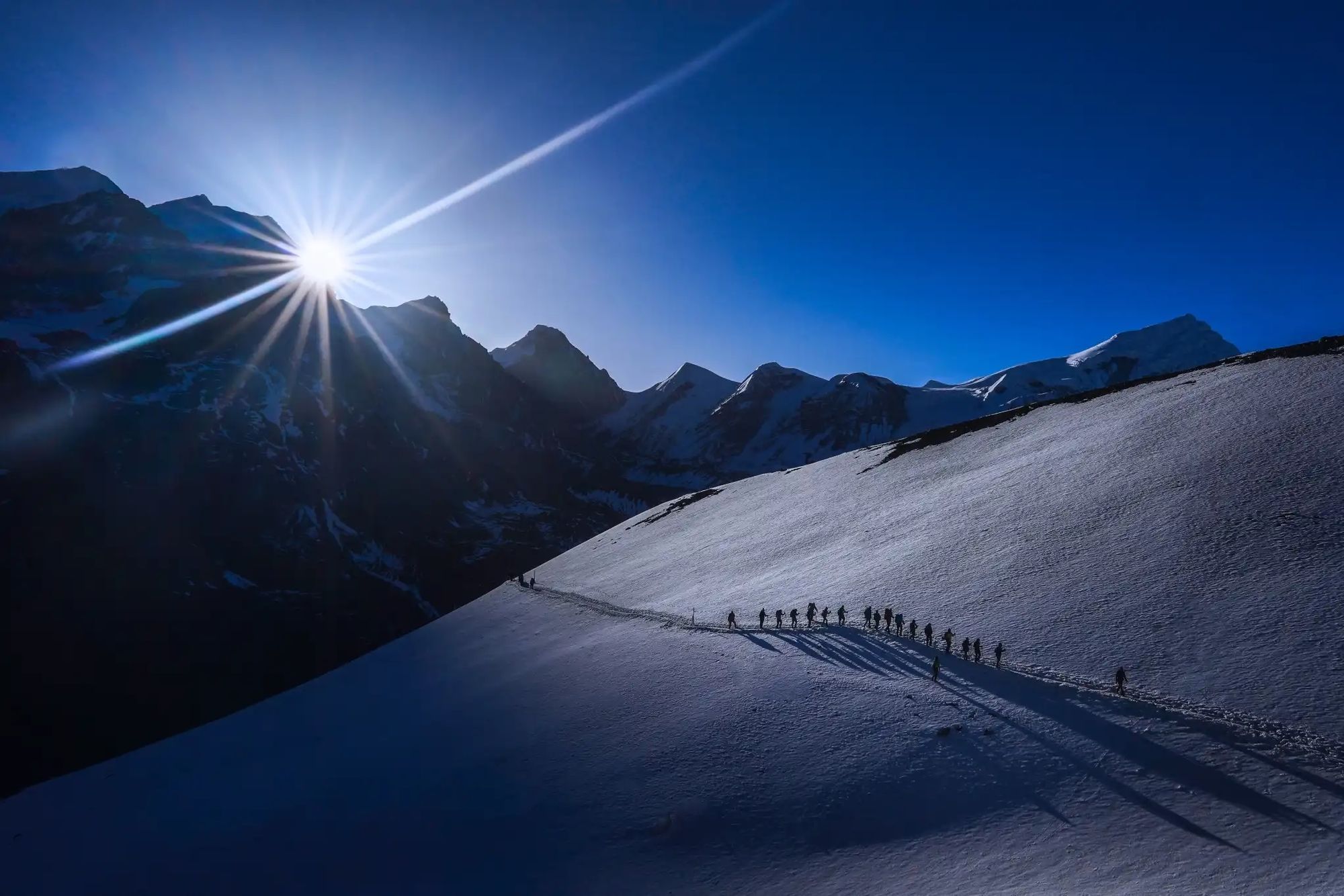
During the winter months, the average daytime temperature of the Annapurna Circuit trek is 5-10°C, but it can go as low as -20°C in higher altitudes, and even lower at night.
During the warmer months, you'll likely experience temperatures from 15-23°C at the lower altitudes on the trek. But as you climb up above 4,000m (13,123ft) it'll drop below 10°C. And the highest point of the trek, Thorong La, may well be below freezing. So even during summer time, you'll need warm clothes!
With such extremes of temperature, it’s absolutely imperative that you’ve brought the appropriate kit with you, such as tried-and-tested hiking boots, decent waterproofs and a down jacket. A fake-brand sleeping bag picked up on a backpacking route won’t cut the mustard in the Himalayas.
Seasonal Packing Considerations for the Annapurna Circuit
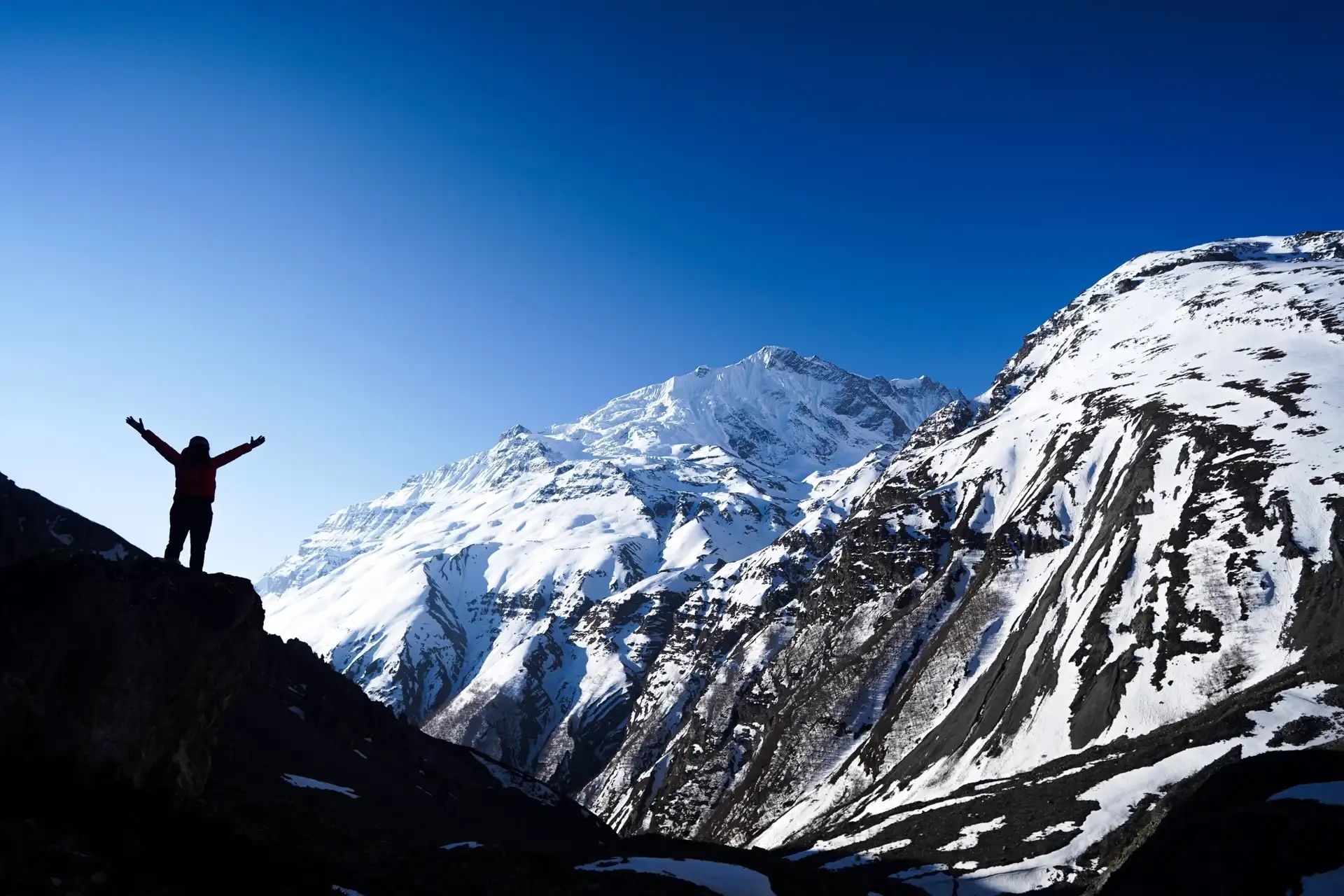
Spring (March to May)
Spring brings warming temperatures, blossoming rhododendrons, and clearer skies. Days are generally mild, but temperatures can still dip below freezing at night, especially above 3,500m. A good layering system is key. Waterproofs are also essential, as spring showers are not uncommon. Snow may still be lingering at higher altitudes, so microspikes might come in handy.
Summer / Monsoon (June to August)
Monsoon season means rain, leeches, and slippery trails. It’s not the most popular time to trek, but if you're going, pack serious waterproofs, quick-drying clothes, and leech socks. Visibility may be limited, and some sections of the trail can become impassable due to landslides. Waterproof pack covers and dry bags are a must.
Autumn (September to November)
This is peak trekking season for good reason: stable weather, dry trails, and crisp mountain views. Daytime temperatures are pleasant, but nights can get cold, especially above 4,000m. Pack a warm jacket, thermal base layers, and a good sleeping bag. You won't need heavy snow gear, but some frost is likely.
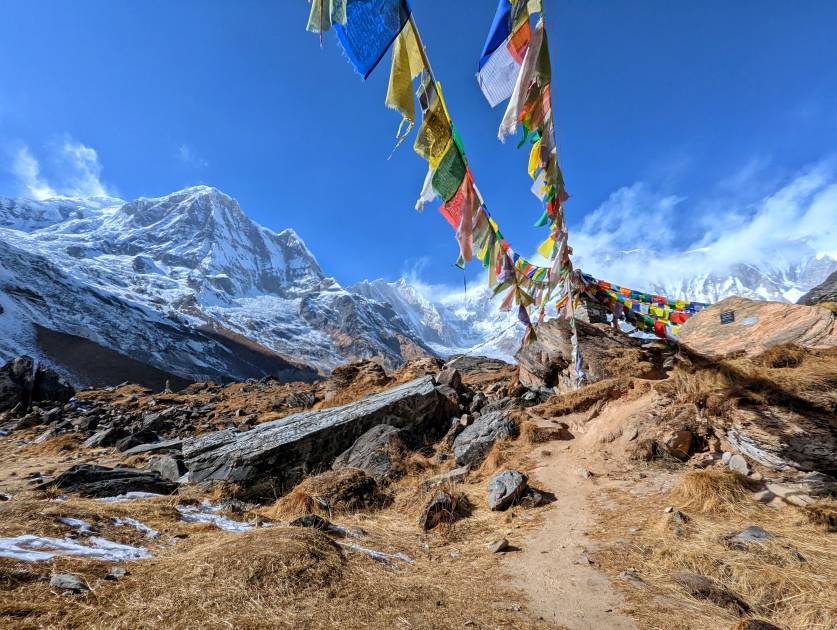
Winter (December to February)
Winter brings deep snow at higher elevations, sub-zero temperatures, and the closure of some teahouses. If you're trekking in winter, you'll need extra-warm layers, insulated boots, and microspikes or crampons. Daylight hours are shorter, and Thorong La Pass may be closed if conditions are severe. A four-season sleeping bag is essential, and it’s wise to check forecasts and conditions daily.
Annapurna Circuit Packing List
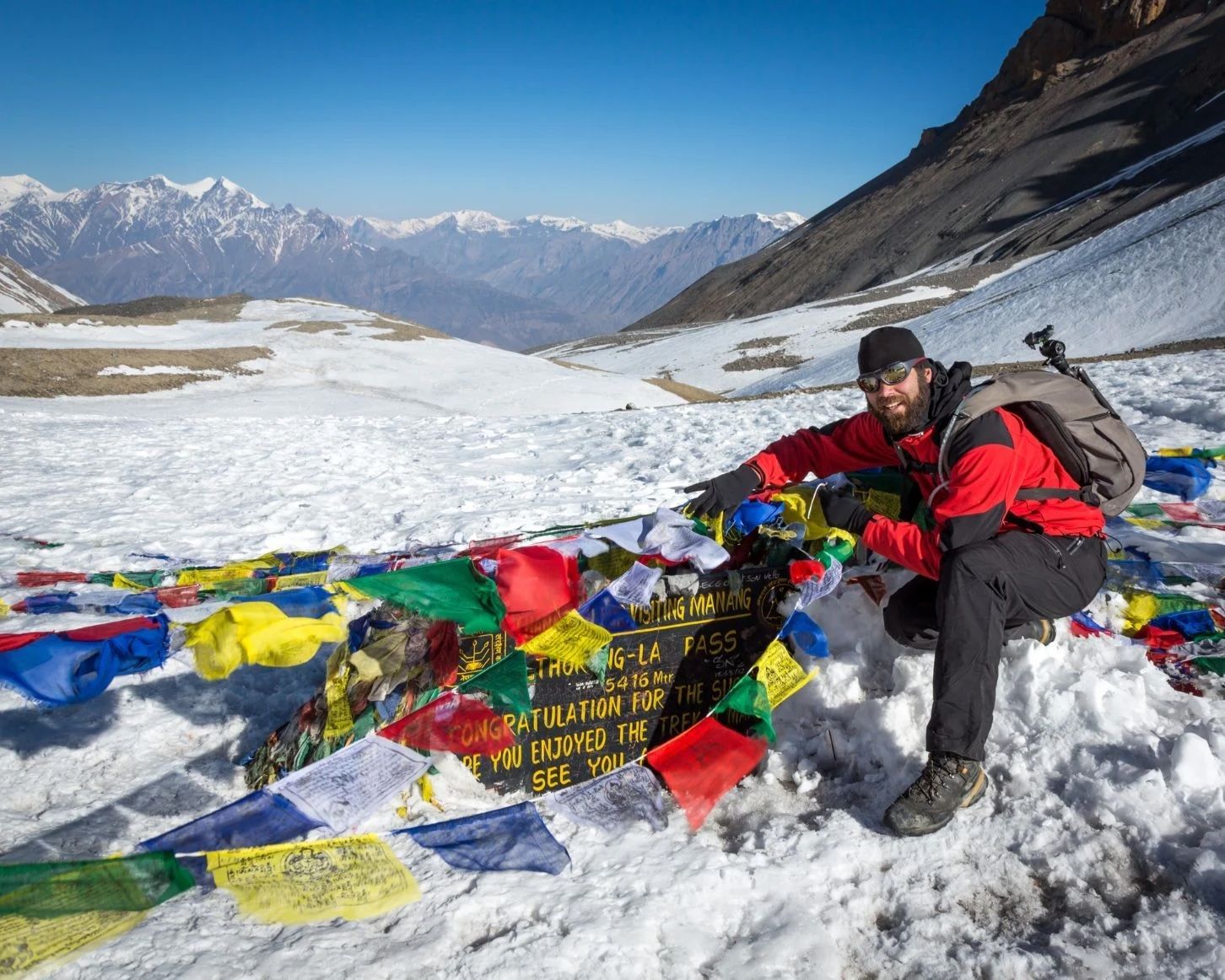
Bags
- Day pack with rain cover (30 litre +)
- Duffle bag (for the porters to carry your overnight kit)
Clothes
- Waterproof jacket with hood
- Mid-weight down jacket
- Waterproof trousers
- Lightweight trekking trousers
- Hiking shorts (if trekking in the summer)
- Thermals (top and bottom, merino ideal)
- 2-3 trekking t-shirts/shirts
- Fleece or warm mid-layer
- Waterproof thick gloves
- Glove liners
- Hiking socks and lighter walking socks
- Wool hat
- Sun hat
- Spare underwear
- Buff or similar
Shoes
- Worn in waterproof hiking boots
- Lightweight trainers (for the evenings)
- Flip-flops or sandals
Sleeping
- 4-season sleeping bag (you’ll need this even if staying at tea houses).
- Sleeping bag liner
- Pillow case (optional)

Other
- Trekking poles
- Travel towel
- Sun protection (sunscreen, sunglasses)
- 2 water bottles (1 litre each)
- Metal SIGG bottle (useful to fill with hot water to use as a hot water bottle at bedtime)
- Headtorch
- First aid kit and/or personal medication
- Water purification tablets/system
- Hand gel
- Biodegradable wet wipes
- Small biodegradable bags to take toilet tissue off the mountain
- Toilet paper/tissues
- 1 x passport photo for trek permit
- Powerbank
- Universal plug adaptor
- Book/kindle/cards for downtime
Winter Departures (November to March)
- Gaiters
- Microspikes
- Extra warm layers (add an extra warm item to all key items above)
- Extra set of thermals (pair to walk in, pair to sleep in)
- Merino trekking socks
- Merino glove liners
How Much Cash Should I Bring on the Annapurna Circuit Trek?
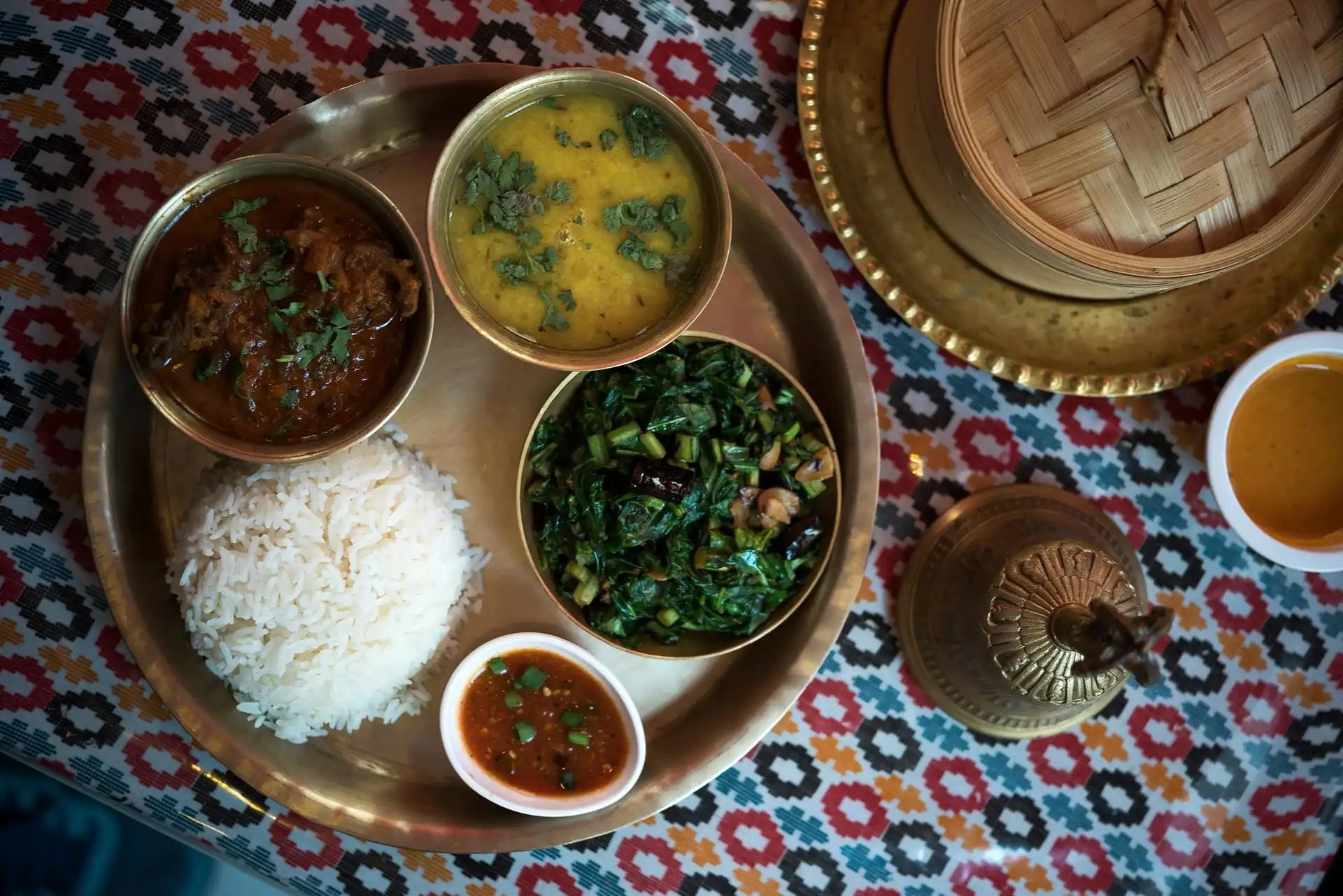
It’s essential to carry cash (Nepalese rupees) to cover the cost of your trip. You’ll need around £18 to £26 ($25 to $35) per day to cover the cost of meals in tea houses, such as a plate of dal bhat (lentils, vegetables and rice) or chow mein.
Services such as hot showers, WiFi and electricity for charging devices will also incur a cost. Expect to pay between £1.50 to £3.75 ($2 to $5) for each. Both food and services become more expensive the higher you ascend along the trekking route.
You’ll also need to bring a tip for your guide and the rest of the team. The amount you give is your choice, but we recommend each trekker give around £123 ($165) to be shared out amongst guides, porters and drivers.
Gear Rental in Kathmandu and Pokhara
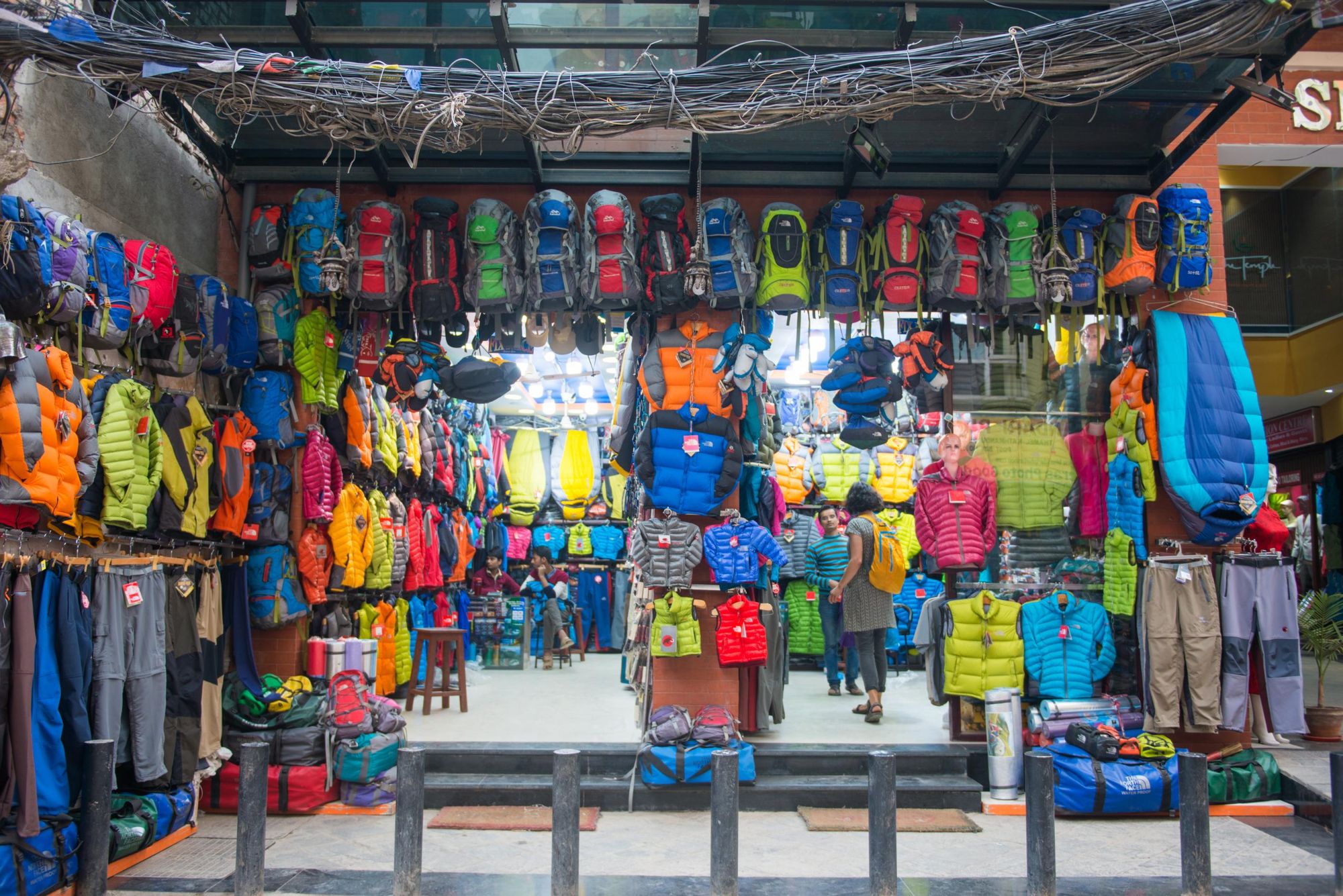
If you're travelling light or want to avoid investing in high-altitude gear for a one-off trip, renting equipment in Kathmandu or Pokhara is an option. Not all branding is genuine, so be wary of poor quality fakes. We recommend going through your guide or tour operator if you’d like to rent gear.
Microspikes for winter departures cost around £1 ($1.50) per day. A down jacket also costs £1 ($1.50) per day, but you’ll need to pay a deposit of £37 ($50). A three season sleeping bag requires a deposit of £60 ($80) and costs around £1.50 ($2 per day).
Inspired? Trek the Annapurna Circuit with us, or check out our Annapurna Sanctuary Trek.


